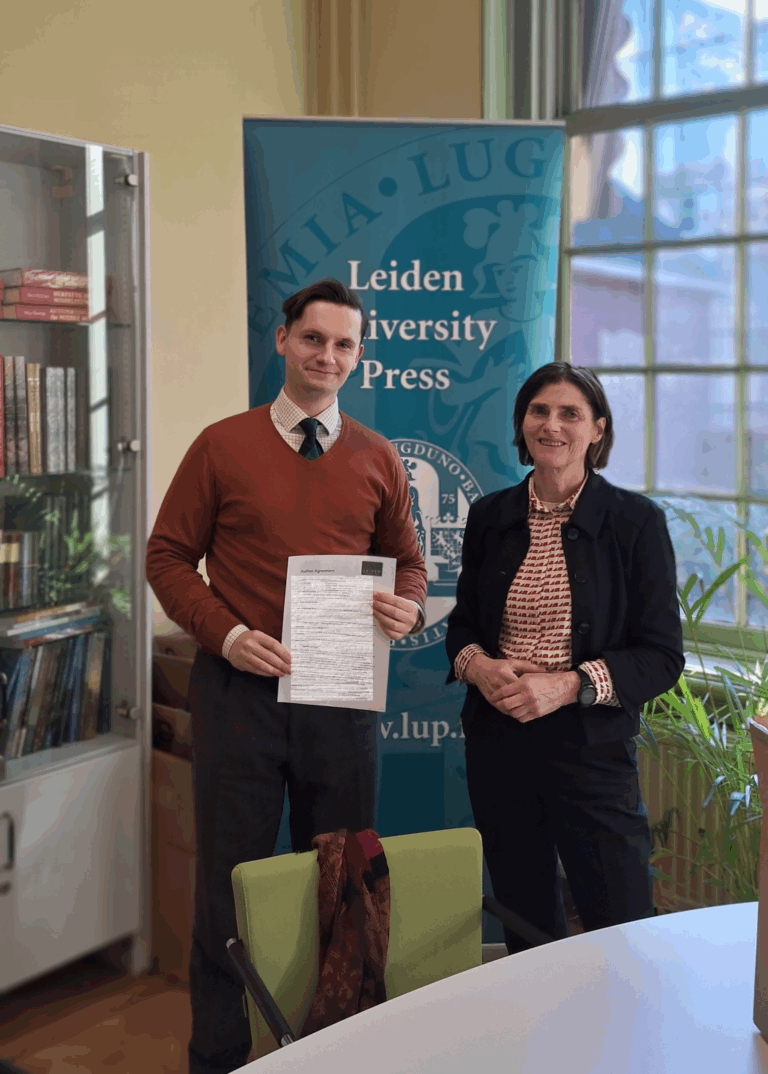By writer Jan Wim Buisman in a featured series about his book Lightning in the Age of Benjamin Franklin. This blog was originally published by the John Adams Institute.
That God addresses people directly in thunder and lightning was a generally accepted idea in the religious mentality of the sixteenth-, seventeenth- and eighteenth-century West. That notion of the immediate and clearly audible presence of the Almighty could have extreme consequences. In certain circles it came to be regarded as disrespectful to eat, work, or even speak during thunderstorms – to interrupt God, as it were. So, in the eyes of strictly pious people, installing a lightning rod was the very height of irreverence: not only an arrogant and futile effort to improve God’s creation, but worse, a presumptuous and pointless attempt to evade his judgement.
Like every other (potential) catastrophic natural phenomenon, thunder and lightning were signs first and foremost, and more specifically signs of God’s wrath and the coming Day of Judgement. Up until the second half of the eighteenth century that was regarded as self-evident, both in the Dutch Republic and elsewhere, among both Protestants and Catholics, and within both high and low social classes. Lightning was God’s weapon. It explains why lightning bolts were typically depicted with arrowheads, particularly from the early seventeenth century.

Porcelain dish with various objects and insects, and arrow-headed shafts of lightning (Brussels, ca. 1900)
Religious sermons addressed thunder and lightning too, as the story of the Bostonian Reverend Cotton Mather (1663-1728) shows. On 12 September 1694, while praying with his congregation at the start of a service, Mather had a premonition that prompted him to lay aside the sermon he had prepared and to switch to Psalm 29:3 (“The voice of the Lord is over the waters; the God of glory thunders, the Lord, over many waters…”) The loud claps of thunder that almost drowned out his discourse were, he told his parishioners, God’s own glorious voice. Even when interrupted by a messenger telling him that his own house had been badly damaged by lightning, Mather continued his sermon. For as he explained to his congregation, the material things of life were far less important than contemplating God’s call. Repentance was necessary, but at the same time Mather stressed that the true believer should not be afraid for nothing happened without God’s will. The great American preacher and theologian Jonathan Edwards (1703-1758) agreed with him, describing thunder and lightning as part of “God’s artillery”, the perfect instruments of divine wrath.

American preacher and theologian Jonathan Edwards (1703-1758)
Under the influence of the Enlightenment, such a punitive interpretation of storms lost a lot of its credibility by the second half of the eighteenth century. In 1744, for example, an article in The American Magazine warns against superstitious fears of such things as thunderstorms and stated that we should not “measure the Work of God by our scanty Capacities.” People shouldn’t resort to supernatural explanations for natural phenomena, even if they didn’t know the cause. In the second half of the eighteenth century, Franklin’s technical invention of the lightning rod was added to this more distant view of the divine, depriving God of his supposed instrument of punishment.
Now enlightened thinkers no longer considered storms as an announcement of punishment for committing sin, thunder and lightning could be faced without fear. Those who were still afraid were soon accused of harboring a false idea of God. For it was no longer God’s storm-induced repentance that was important, but the use of (ultimately God-given) devices like the lightning rod.
Thunder and lightning did still gave rise to pious reflections, as in the work of the great Friedrich Gottlieb Klopstock (1724-1803). In his hymn The Spring Celebration composed in 1759, it was not punishment he saw in the approaching storm, but the heavenly Father’s love and goodness. Despite the depiction of God’s formidable omnipotence in a storm, the threat it once posed had largely disappeared. After Franklin’s invention of the lightning rod it was much easier to outline God’s wise intentions with a thunderstorm. All in all, not only the view of God and man changed, but the view of nature as well.
 Jan Wim Buisman (1954) is a retired Lecturer on the History of Christianity, with a special focus on the early modern period. He is now affiliated as guest researcher at the Leiden University Centre for the Study of Religion. He has written extensively on the history of religious mentalities and the impact in the Netherlands of natural disasters on views of God, man, and nature, between 1750 and 1830. Click here to order the book, ‘Lightning in the Age of Benjamin Franklin: Facts and Fictions in Science, Religion and Art’ by author Jan Wim Buisman. Use discount code jai50.
Jan Wim Buisman (1954) is a retired Lecturer on the History of Christianity, with a special focus on the early modern period. He is now affiliated as guest researcher at the Leiden University Centre for the Study of Religion. He has written extensively on the history of religious mentalities and the impact in the Netherlands of natural disasters on views of God, man, and nature, between 1750 and 1830. Click here to order the book, ‘Lightning in the Age of Benjamin Franklin: Facts and Fictions in Science, Religion and Art’ by author Jan Wim Buisman. Use discount code jai50.
(top image: The village Stroe on the isle of Wieringen (1778), print by T. de Roode, after P. van Cuyck; via Zuiderzee Museum)





